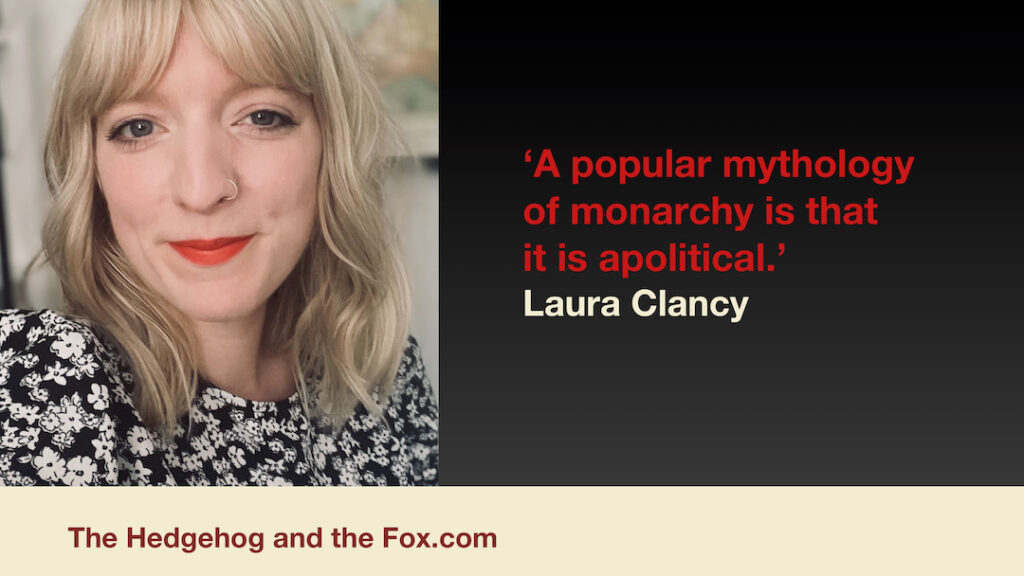
This week a conversation about the British royal family with Laura Clancy, who’s a lecturer in media in the sociology department at Lancaster University. Last autumn I spoke to Laura shortly after Manchester University Press published her book Running the Family Firm: how the royal family manages its image and our money.
Laura’s subtitle makes clear that she is not just interested in the image: how the royals are portrayed in the media. She also wants to follow the money. And look at the relationship between monarchy, power, capital and inequality.
Laura opens her book by recounting an incident at the gym in October 2018 where she overheard a woman say, ‘I hate it when people moan about how much money royal weddings cost – this country has more important problems to worry about.’
The wedding in question was Princess Eugenie’s; it was held at Windsor Castle, paid for by the Sovereign Grant and broadcast live on ITV. There was plenty of press attention but overall much less hoopla than for the weddings of Prince William and Kate Middleton, or Prince Harry and Meghan Markle.
Laura has often encountered the response that the country has more important things to worry about when she tells people she’s researching the royal family. Plus the associated responses that they don’t cost that much, that they’re good for the country, or that ultimately they don’t really matter. For a lot of Britons, they just are, a bit like the weather.
Laura disagrees. Her book argues that ‘the principles by which monarchy works are key principles by which the whole system works, and in understanding monarchy we can begin to make sense of the system’. So much writing on the royal family is just about the image that Laura’s book was refreshing because it showed there’s much more to it than that. Put one family at the apex of the pyramid by hereditary right and it’s bound to shape expectations of what’s right, what’s permissible, who’s permissible, below them. It helps keep the whole pyramid in place.
But none of that would be possible without the image, so we started our conversation, with a key moment for the in royal history. The queen’s coronation in 1953, the first royal ceremony to be televised live. The challenge for those managing the broadcast was to convey mystery and majesty without dispelling the magic. The public had to feel they had been granted privileged access, but not allowed to get too close. A degree of intimacy, but not too much. It’s a recurrent challenge…
